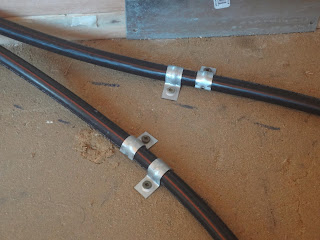So after the rain event, I had eight working days to make as much progress installing the cedar shingles as possible before leaving on vacation. Sure, it's been 25 years since I last did any shingling, but I thought I could make a good bit of progress. True, I needed the framing guys to install all the trim, and I wanted to pre-paint it while it was easier before the shingles went up.
 |
| 28 bundles of shingles |
I just about broke my trailer getting the shingles back from the building supply store. Luckily, they are about 1/10 of a mile from home.
Well as usual, life and work got in the way, and I had to keep revising down my expectation for how much of the house I'd get covered. In the end, I finished the north wall, and told the framers that if they have some extra time in between other projects, they were free to come down and make whatever progress they could make.
So upon returning from vacation, this is what I found--like someone had picked up my little shack and replaced it with a finished home!
This was a total thrill to see! There's still a little left do do on the west side. See that little unfinished bit on the gable? That took over 6 hours to wrap up yesterday. I do good work, but I'm slow. I figure I must have gone up and down the ladder to the roof about 80 times, so if nothing else I got a good workout!
















